Complimentary worldwide shipping on orders over $400 · No import tariffs for most countries
Complimentary worldwide shipping on orders over $400 · No import tariffs for most countries
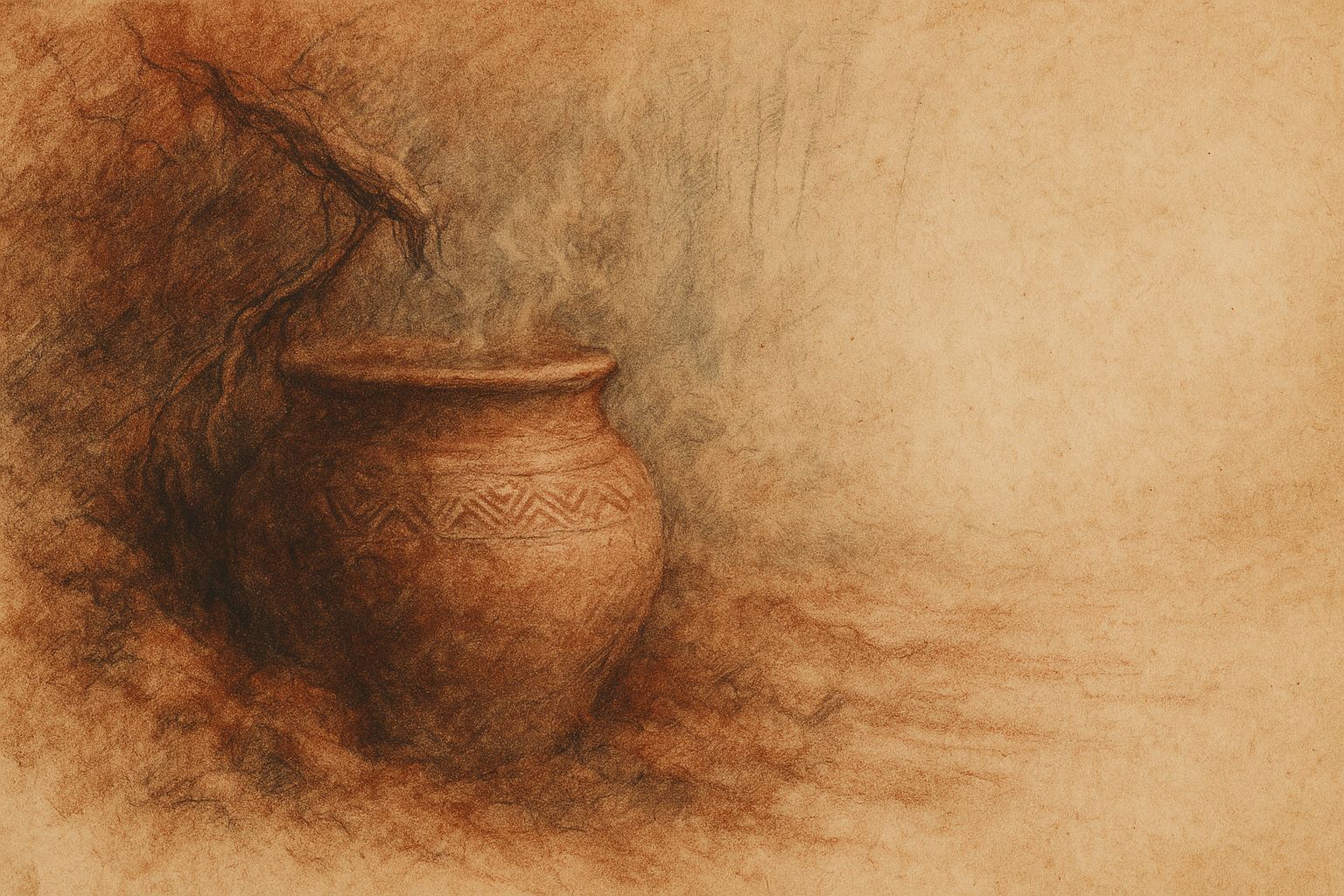
The Pilgrim’s Guide to Cambodia’s Beginnings
This essay stands at the threshold of The Pilgrim’s Guide to Angkor — a series of spiritual guidebooks for those who seek to walk the temples not only with their eyes, but with silence, breath, and reverence. These volumes are not conventional guides. They are companions for pilgrims: ways of attending to stone, rain, and shadow with the stillness they ask of us. To begin such a journey, we must first step into Cambodia’s deeper beginnings — into caves, rivers, and myths where the soil itself first learned to speak. This essay is that step.
—
“Do not choose a straight path,
nor reject a winding one.
Choose the path your ancestors have trod.”
— Cambodian proverb
—
Threshold
To walk into Cambodia’s beginnings is to step into a silence older than stone. The country’s prehistory stretches beyond memory, into caves where hands first pressed clay into vessels, into forests where stone flakes still lie beneath roots, into rivers where fish and people learned the same seasonal rhythms. The story is not written in chronicles of kings, nor in measured lines of inscription, but in fragments of bone and pottery, in patterns of habitation that reach backward thousands of years.
It is a beginning without an opening page, whispered not by scribes but by soil and water. Yet even here, before Angkor, before Funan, before Chenla, there is continuity — echoes that carry forward into the present. A pilgrim who bends close enough can hear the same songs: rice falling into baskets, laughter over fish fires, the sound of rain pressing against bamboo eaves.
This essay seeks not only to explain those beginnings but to allow them to be felt — as if one were entering Cambodia anew, in the company of those who first named its stones and traced its rivers.
—
The Cave of Origins
In the northwest, in the limestone hollows of Laang Spean, archaeologists found traces of fire and pottery dating back six millennia. The cave’s darkness is thick, yet its floor remembers. Potsherds lie with incised lines scarcely changed across time; their patterns echo in vessels made by Cambodian hands even today. One could almost believe the ancestors are still at work in the flicker of a torch: shaping clay, marking it with symbols of belonging, baking it in earth kilns.
Far to the south, another cave opened toward the ocean, settled a thousand years later. Here, salt air mixed with smoke, and the sea whispered a different rhythm of life. In the east, pebble tools mark an even older presence — a “pebble culture,” primitive yet enduring, a first attempt at shaping the stubbornness of stone into something useful.
At Samrong Sen, skulls and bones from around 1500 BCE resemble modern Cambodians. To look at them is to see continuity: the curve of a brow, the angle of a jaw, features recognisable in faces walking Cambodian markets today. The past, even in its remoteness, is not alien; it breathes through the present.
Prehistoric Cambodia was never isolated. Evidence suggests early cultivation of rice, the casting of bronze, the domestication of pigs and water buffalo. The first Cambodians lived in circular fortified villages, houses raised above ground on stilts, entered by ladders — a form still familiar in today’s countryside. They fished, they farmed shifting fields of rice and tubers, they tattooed their skin with protective marks, they chewed betel, and they honoured spirits tied to stone and water.
Already, we glimpse a cultural temperament: reverence for ancestors, devotion to soil, trust in continuity. These elements, like subterranean roots, nourished the centuries to come.
—
Changelessness and Change
The French, when they came in the nineteenth century, described Cambodian culture as changeless, as if it had slept for millennia. Pol Pot’s regime, in its own violent mirror, accused Cambodians of having been enslaved or passive for two thousand years. Both visions are distortions. Beneath the surface of apparent stability, Cambodia has known cycles of revolution, adaptation, reinvention.
Yet there is truth in continuity. Cambodian proverbs warn against rejecting ancestral paths. Experimentation, in a subsistence world, could lead to hunger; continuity was safer than innovation. To plant rice in the same manner, to mark pots with the same patterns, to celebrate new year with the same games — these were not failures of imagination but strategies of survival and reverence.
At the same time, Cambodia was never static. Around the beginning of the Common Era, waves of Indian influence arrived — in language, religion, art, kingship, architecture. This was not conquest but absorption, a process known as Indianisation. India gave Cambodia its alphabet, Sanskrit poetry, Hindu and Buddhist cosmologies, new political models, and new rituals. Yet Cambodia was never merely an extension of India; it remained itself, reinterpreting every borrowed element with local breath.
—
The Marriage of Dragon and Brahman
At the heart of Cambodia’s mythic origin lies a story. A Brahman named Kaundinya arrived by sea, armed with a magical bow. A dragon princess paddled out to meet him. He shot an arrow into her boat, frightening her into submission and marriage. Her father, the dragon king, drained the waters that covered the land, making space for Kaundinya to rule. The country took the name Kambuja, and generations of kings traced their lineage to this union of foreigner and naga, of sky and water.
The myth is not historical fact, but it reveals a truth. Cambodian identity has always been hybrid: a marriage of the local and the foreign, of nature and culture, of serpent and priest. To be legitimate, kings had to be both Cambodian and Indian at once.
This myth also enshrines a lesson for pilgrims: Cambodia is born not out of conquest but of marriage, alliance, and reciprocity with the spirits of the land. The drained waters are not forgotten; they remain in the wet rice fields, in the Tonlé Sap, in the rains that flood and recede each year, in the dragon-spirits still honoured at village shrines.
—
Funan: Port and Mandala
The Chinese were the first to write Cambodia’s story, recording myths and describing customs. They told of a place they called Funan, a maritime kingdom that flourished between the second and sixth centuries CE. At its heart lay Oc-Eo, a port city in today’s Mekong Delta. Excavations there revealed Roman coins, Indian seals, and jewellery — proof that Cambodia was part of a trading network stretching from Rome to China.
Goods from the forests — ivory, rhinoceros horn, aromatic woods, feathers, cardamom — flowed outward. From abroad came beads, metal, ideas. Funan was not a centralised empire but a constellation of small states and chiefdoms, held together by trade and ritual.
The Chinese described Funan’s people as dark-skinned, frizzy-haired, half-naked cultivators who sowed rice once and reaped for three years, whose king rode elephants, whose houses were thatched with giant leaves shaped like fish. The descriptions are tinged with condescension, yet they preserve glimpses of a lived reality: rice fields, elephants, wooden houses, kings surrounded by ritual pomp.
The most revolutionary innovation of the Funan period may have been irrigation. Canals in the Mekong Delta — now silted over but still visible from the air — hint at organised water management. The Kaundinya myth, with its drained waters, may be a memory of this transformation. Irrigation allowed surpluses, surpluses allowed temples and courts, and temples and courts allowed Cambodia to step onto the stage of history.
—
The Texture of Society
Pre-Angkorean society was not yet centralised. It was made up of villages, each with its nak ta — ancestral spirits bound to soil, stones, and trees. Leadership was measured by prowess: the ability to protect, to lead in war, to perform rituals. Power was not about land alone but about people. To rule was to command followers, to hold entourages, to protect the fertility of soil and community.
Religion was woven tightly into this fabric. Kings and overlords sought protection from Siva, often through the guidance of wandering Indian ascetics. The cult of the lingam — the stone phallus — linked fertility, soil, and divine potency. At Ba Phnom, human sacrifices to Siva’s consort were still recorded as late as the nineteenth century. Such rituals, echoing from prehistory to modern times, reveal the tenacity of Cambodia’s spiritual imagination.
Buddhism, too, flourished. Its concept of merit gave peasants and rulers alike a way to understand social status and suffering. A person’s wealth or power was interpreted as the fruit of past virtue; misfortune was seen as karmic consequence. Kings built temples not only as monuments but as acts of redemption — bargains struck with ancestors and gods for the welfare of the realm.
Society was sharply divided. Slaves (knjom) may have made up a majority, serving temples and elites, working fields, carrying out rituals. Some were debt-bondsmen; others were war captives. Yet even slaves shared much with free peasants: similar food, similar beliefs, similar participation in temple rituals. Freedom and bondage were relative states, not stark divisions.
The line between elite and commoner was also expressed in language. Sanskrit, polished and poetic, was used in inscriptions to praise kings and gods. Khmer, practical and prosaic, recorded temple inventories, land boundaries, and curses against violators. Both languages were carved in stone, yet they spoke to different audiences: the gods, the ancestors, the villagers.
—
Chenla: Fragment and Fusion
After Funan, Chinese records speak of Chenla, divided into “water Chenla” in the Mekong Delta and “land Chenla” inland, perhaps in southern Laos. For centuries, scholars imagined Chenla as a unified kingdom, successor to Funan. But inscriptions suggest otherwise: a patchwork of small realms, princedoms led by ambitious rulers, sometimes joining together, sometimes fracturing apart.
These principalities lived in a rhythm of alliance and rivalry, ritual and war. Overlords bore the suffix -varman (“protection, armour”), emphasising their role as guardians. Kingship was never merely political but cosmological: rulers were seen as universal monarchs, embodiments of divine power, yet also as local chiefs tied to specific soils and spirits.
This was a period of transition. Wet-rice agriculture expanded, populations grew, ideologies deepened. Sanskrit poetry flourished; temples multiplied. Local spirits fused with Hindu gods. Siva blended with Vishnu to form Harihara, a composite deity beloved by Cambodian rulers, embodying the balance of destruction and preservation.
The landscape itself became a mandala: centres of ritual power surrounded by peripheries, all interconnected in shifting constellations. Authority was both fragmented and sacred, diffuse yet binding.
—
Continuities of Sacredness
What is most striking about these early centuries is not the lack of coherence but the persistence of sacred continuity. Sites inhabited in the Neolithic — caves, hillocks, river confluences — remained sacred in Hindu-Buddhist times and are still honoured today. The nak ta of villages blended into Hindu deities; later, Hindu temples became Buddhist shrines; and through it all, the soil itself was never disenfranchised.
The cult of the lingam, the worship of mountains, the veneration of stones — these persisted for millennia. They spoke of a worldview in which fertility, ancestry, and divinity were inseparable. Even Angkor itself, when it arose in the ninth century, would build on this same foundation.
—
Pilgrim’s Pause
If you walk today in Cambodia’s countryside, you can still sense these beginnings. Children play games at New Year that echo centuries. Farmers make offerings to stones, believing spirits dwell there. Dragons still curl in temple balustrades, betel is still chewed, tattoos still mark skin as protection.
The pilgrim’s task is not to treat these as quaint survivals but as living links. They are threads tying the present to Laang Spean, to Samrong Sen, to Kaundinya’s bow and the dragon princess’s drained waters. The ancestors are never entirely past; they breathe in the continuity of gesture, ritual, and word.
Pause at a village shrine. Touch the roughness of stone. Listen for the whisper of water beneath the soil. These are not remnants of an old world but presences of an eternal one.
—
Closing
Cambodia’s beginnings are not a prologue to Angkor but a foundation Angkor never abandoned. Continuity and change, local and foreign, myth and archaeology — these threads weave together into a fabric still unfolding.
For the pilgrim, the invitation is clear: walk slowly, listen deeply, trace the winding paths. The soil remembers, the stones speak, the rivers breathe. To choose the path of the ancestors is to enter not the past alone, but the living presence of Cambodia itself.
—
This essay opens the path of The Pilgrim’s Guide to Angkor — a series of spiritual guidebooks to Cambodia’s sacred temples. Each volume will be a companion for walking, not a manual of facts: a way of moving slowly, pausing deeply, listening for the breath of stone. The series will unfold in volumes devoted to individual temples and to Angkor as a whole, offering pilgrims a way of walking in reverence. May these beginnings guide you onward into the heart of Angkor.
Also in Library
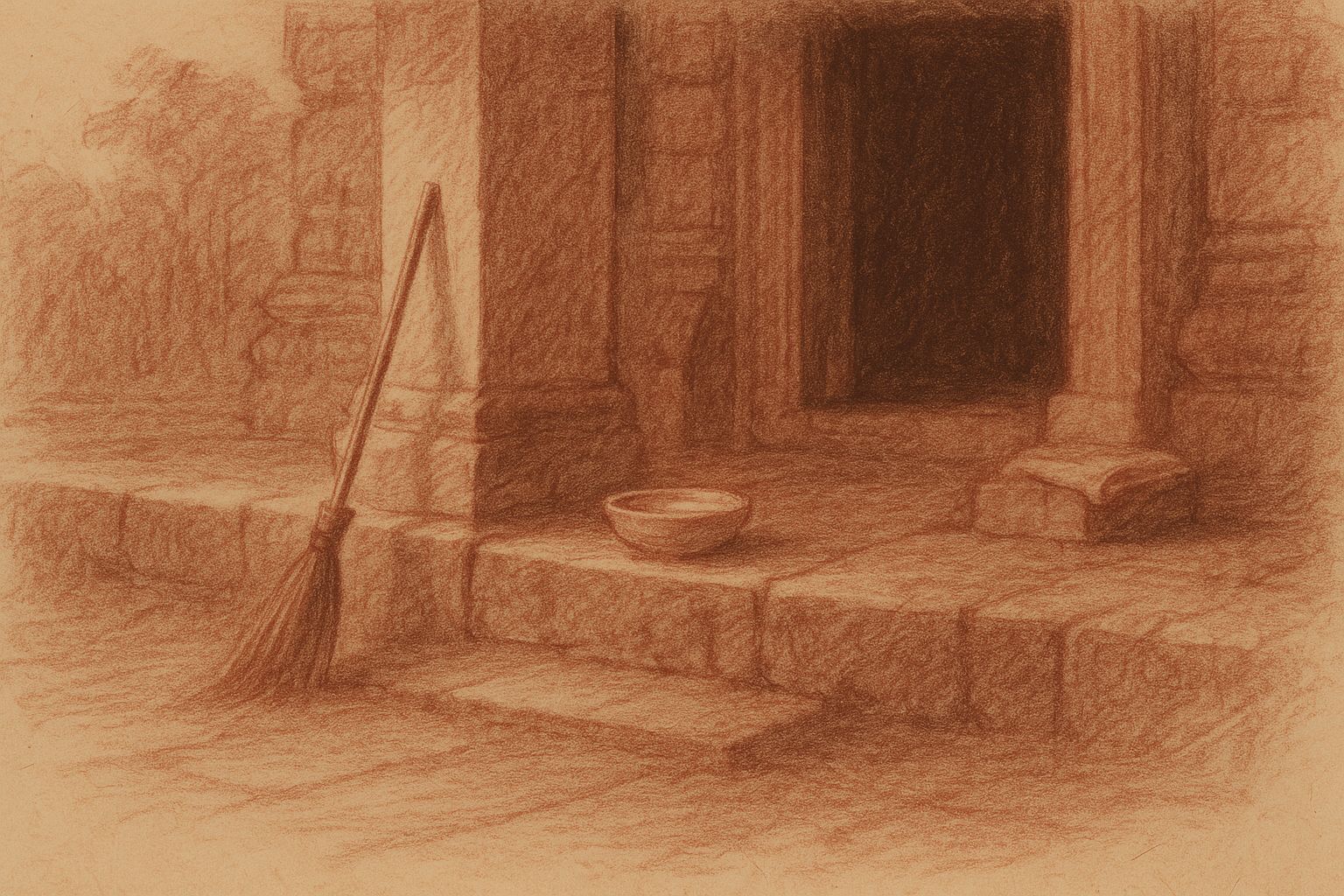
Those Who Keep the Way Open — On the Quiet Guardians of Angkor’s Thresholds
3 min read
Quiet gestures shape the way into Angkor — a swept stone, a refilled bowl, a hand steadying a guardian lion. This essay reflects on the unseen custodians whose daily care keeps the thresholds open, revealing how sacredness endures not through stone alone, but through those who tend its meaning.
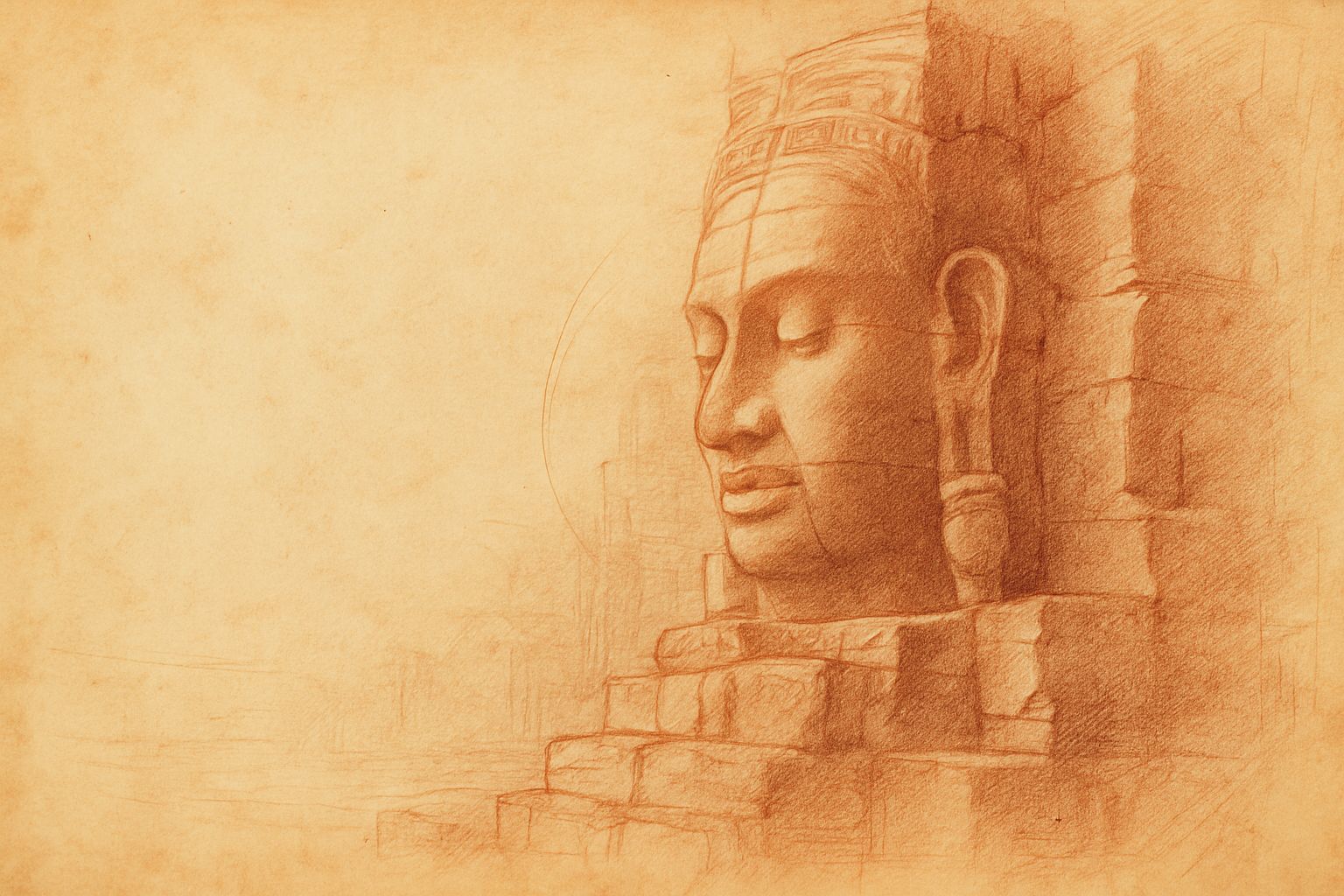
Multiplicity and Mercy — The Face Towers of Jayavarman VII
5 min read
A new vision of kingship rises at the Bayon: serene faces turned to every horizon, shaping a world where authority is expressed as care. Moving through the terraces, one enters a field of steady, compassionate presence — a landscape where stone, light, and time teach through quiet attention.
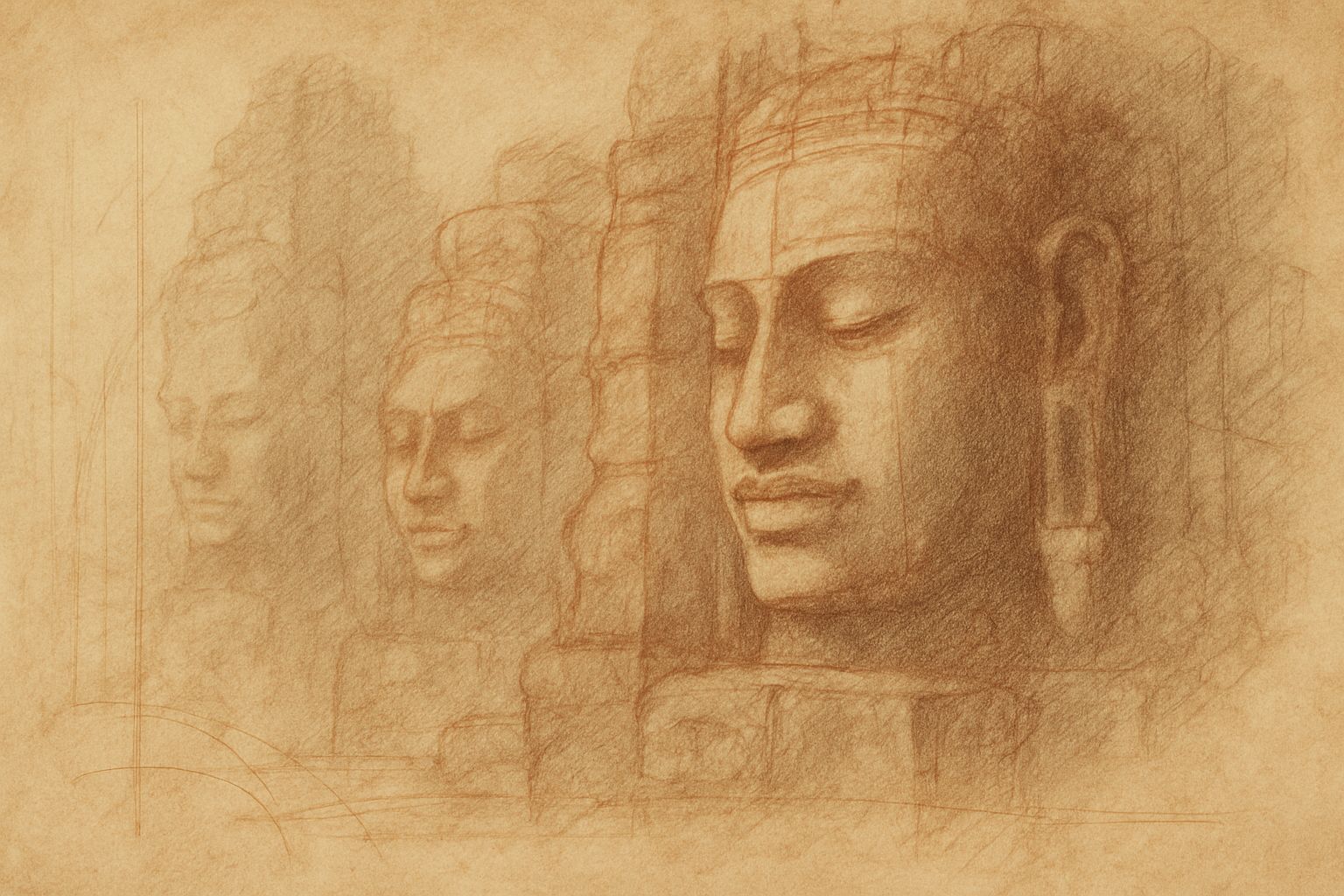
Stone That Dreams
4 min read
Bayon wakes like a mind emerging from shadow. Its many faces shift with light and breath, teaching that perception—and the self—is never singular. In walking this forest of towers, the pilgrim discovers a quiet multiplicity within, held together by a calm that feels both ancient and newly understood.
Join My Studio Journal
Receive occasional letters from my studio in Siem Reap—offering a glimpse into my creative process, early access to new fine art prints, field notes from the temples of Angkor, exhibition announcements, and reflections on beauty, impermanence, and the spirit of place.
No noise. No clutter. Just quiet inspiration, delivered gently.
Subscribe and stay connected to the unfolding story.
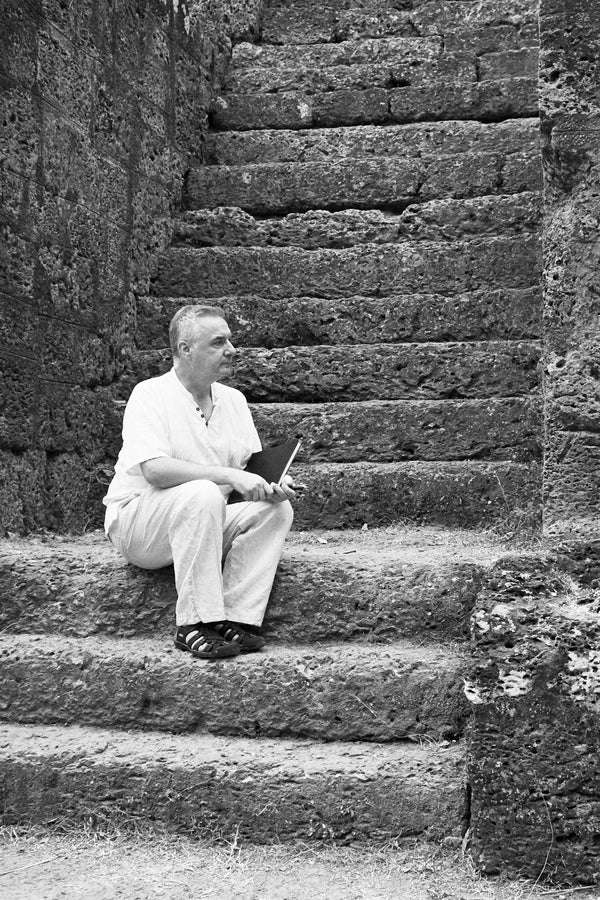
Join My Studio Journal
Receive occasional letters from my studio in Siem Reap—offering a glimpse into my creative process, early access to new fine art prints, field notes from the temples of Angkor, exhibition announcements, and reflections on beauty, impermanence, and the spirit of place.
No noise. No clutter. Just quiet inspiration, delivered gently.
Subscribe and stay connected to the unfolding story.
